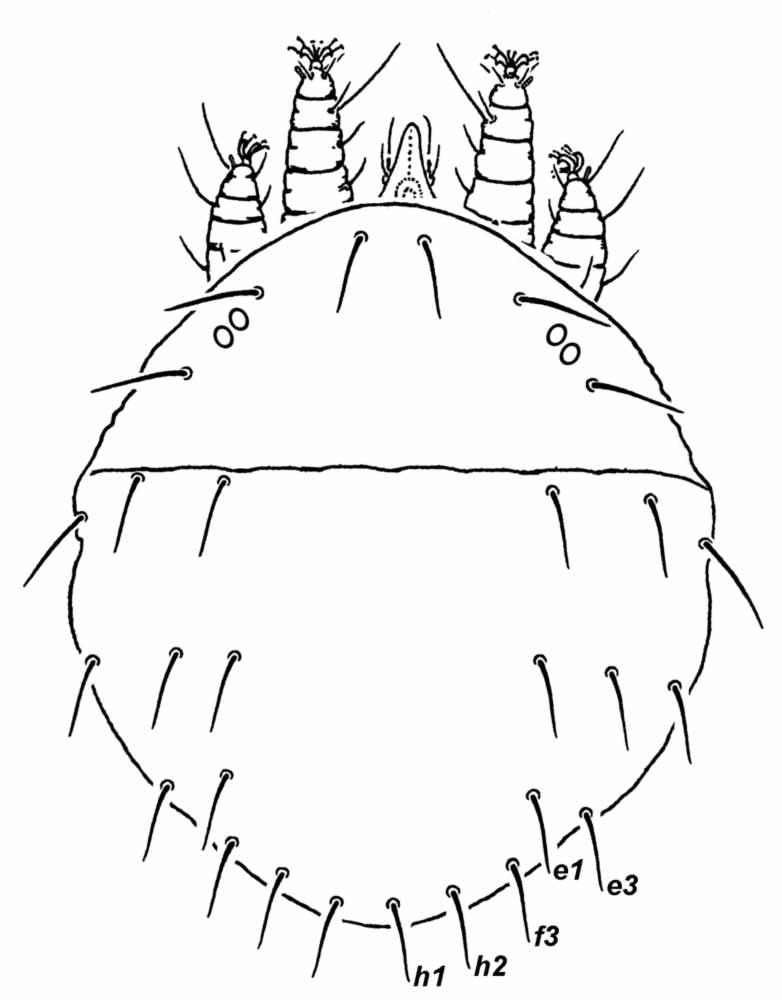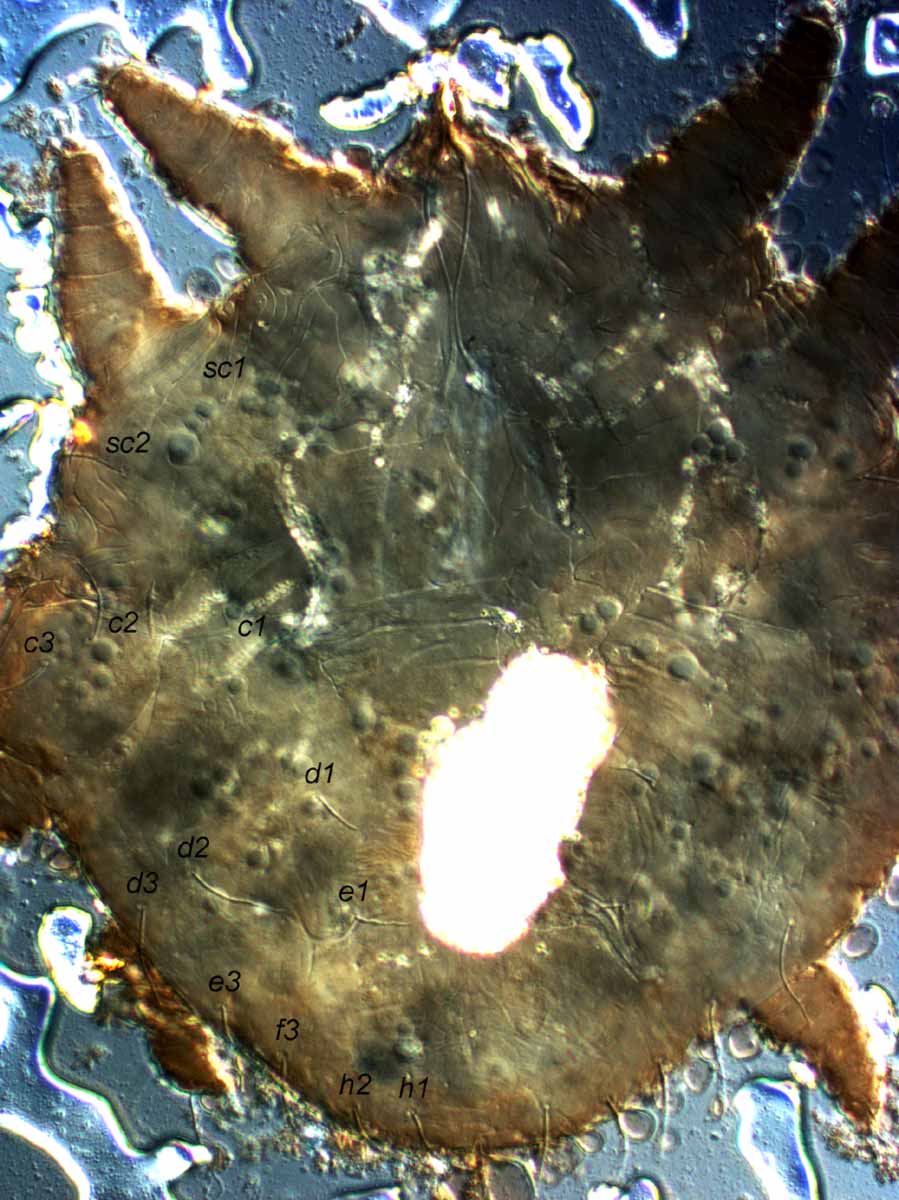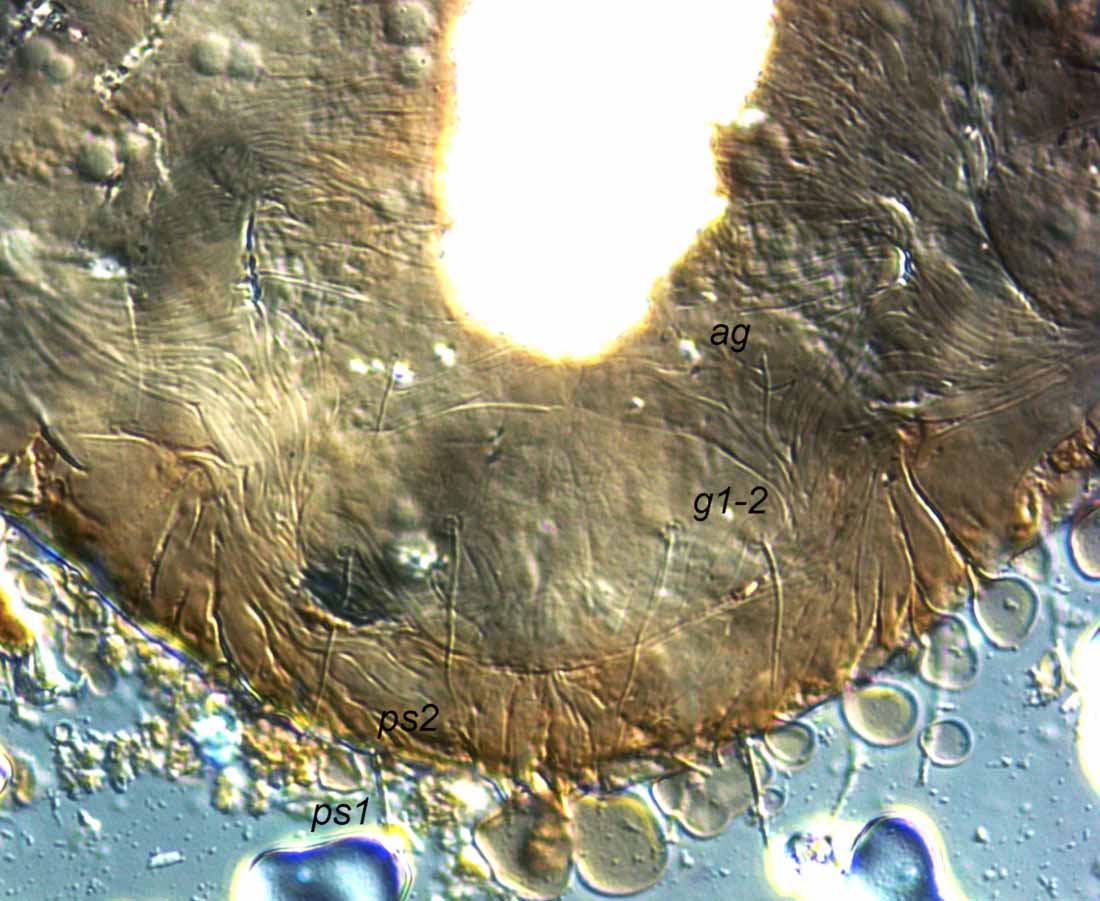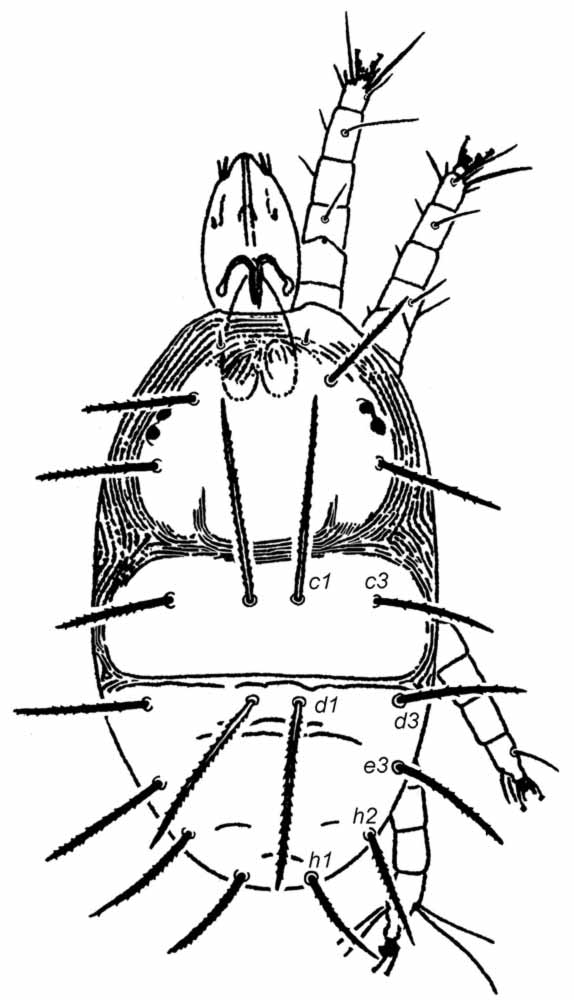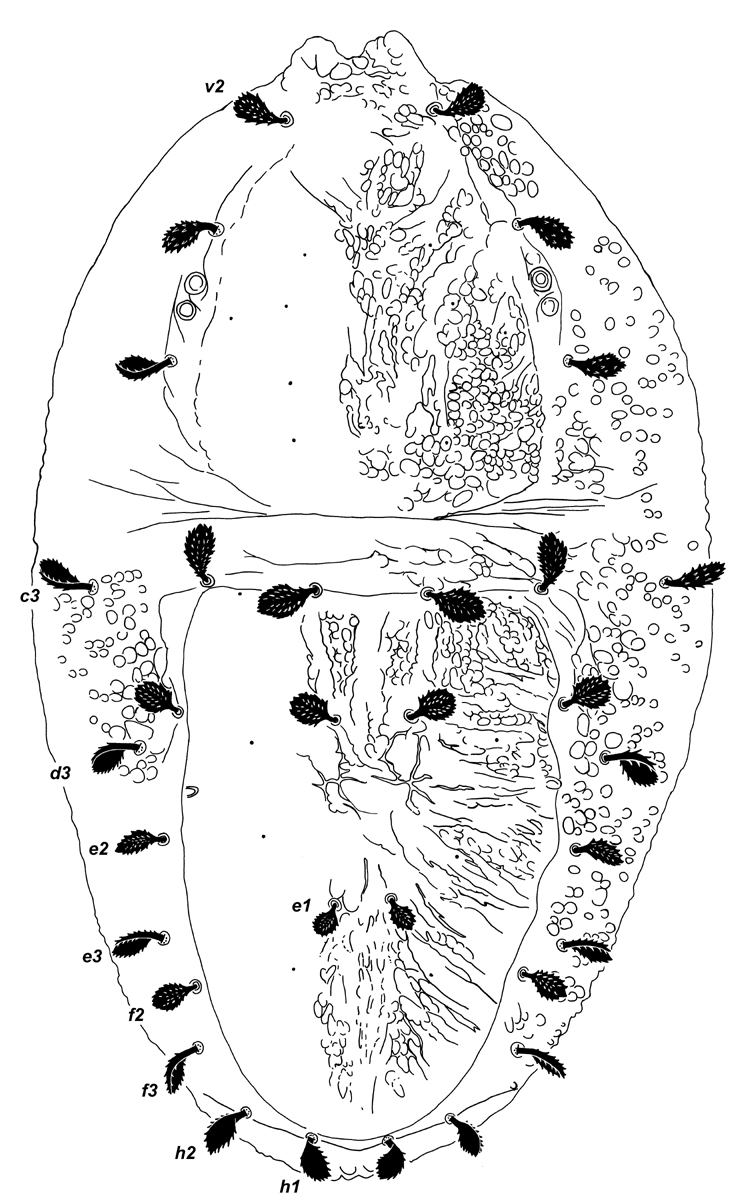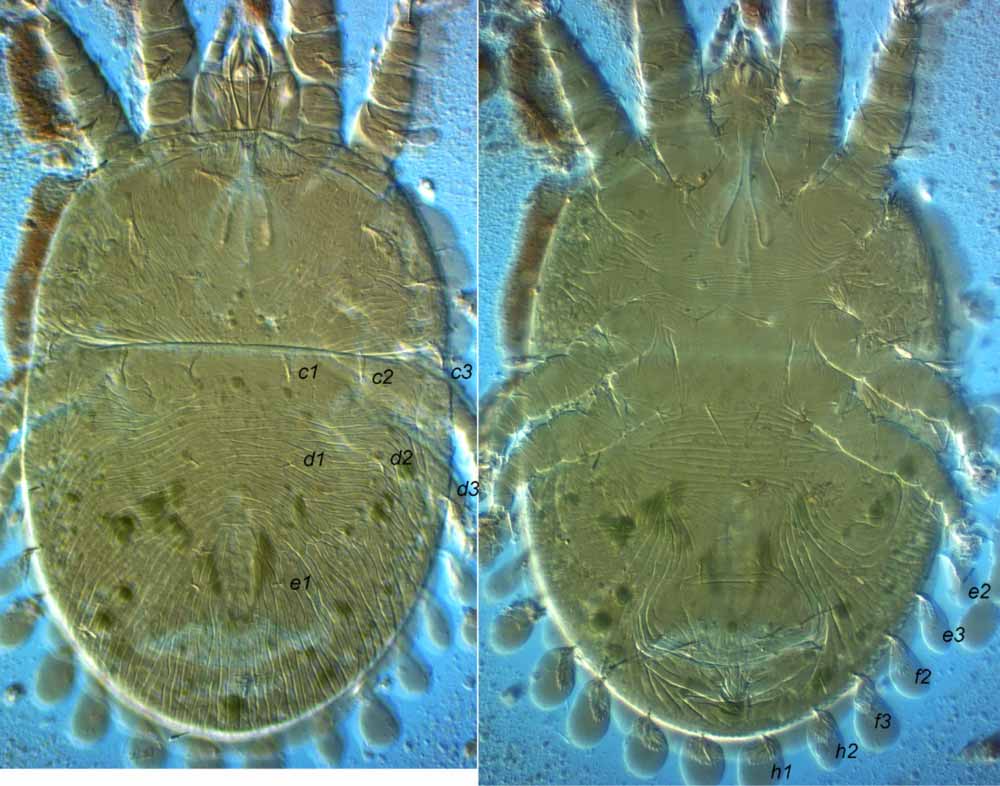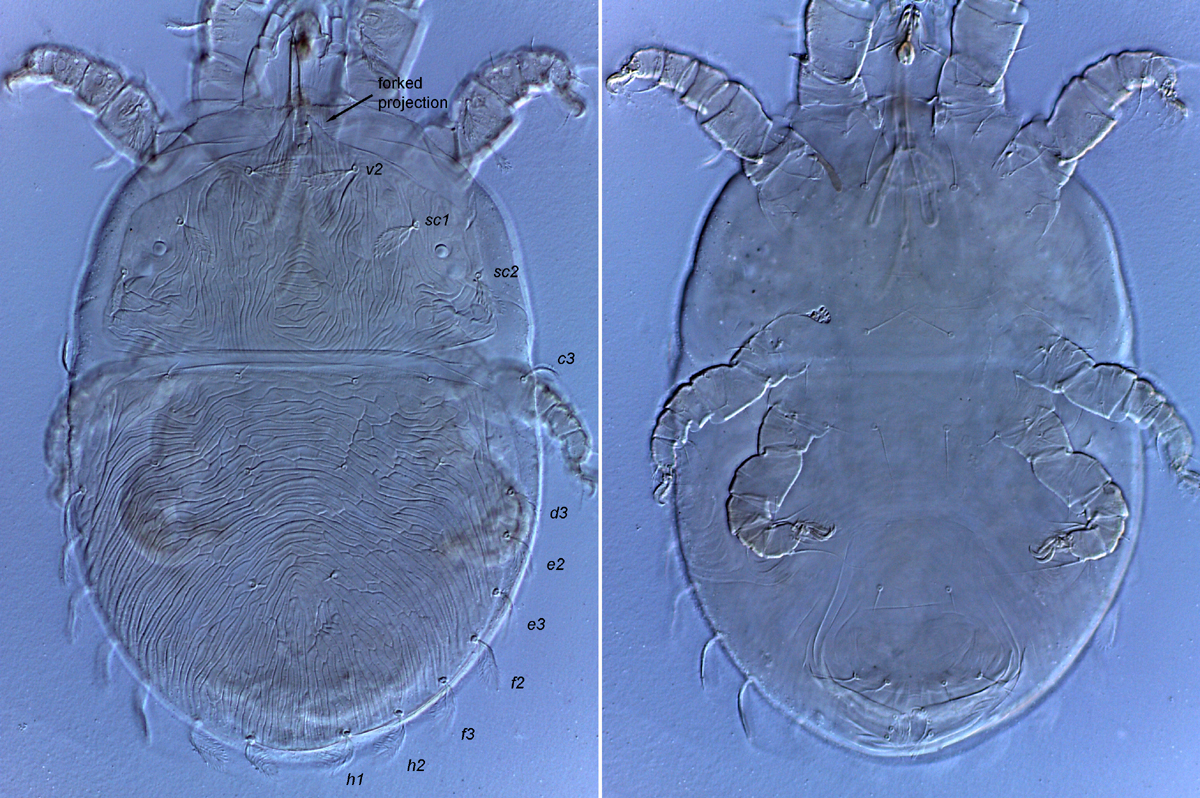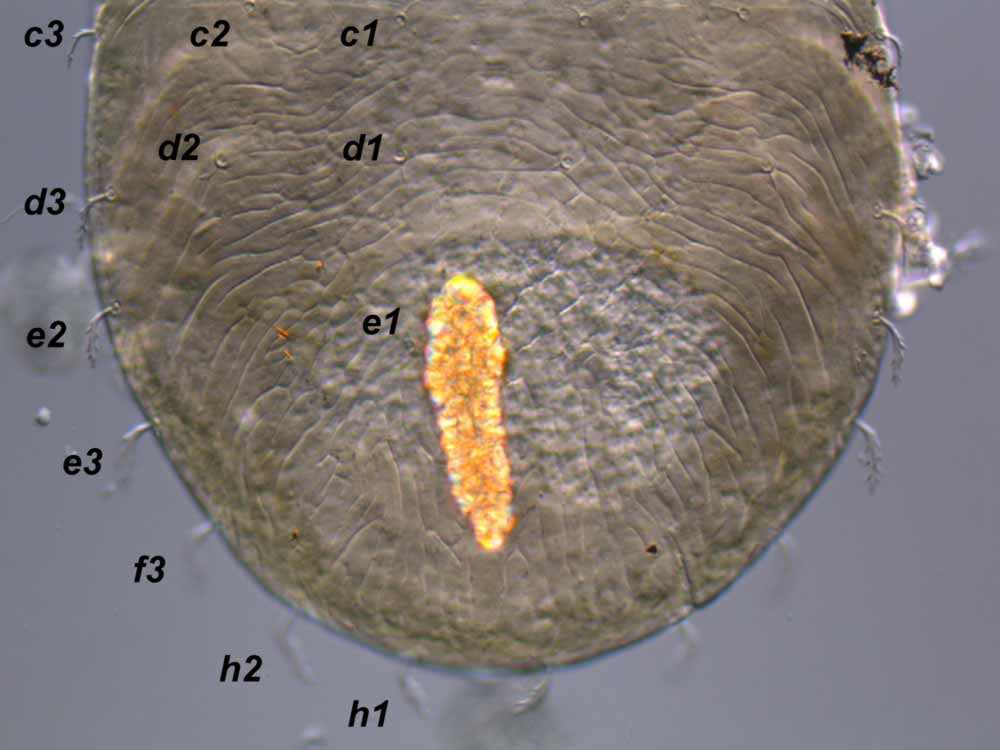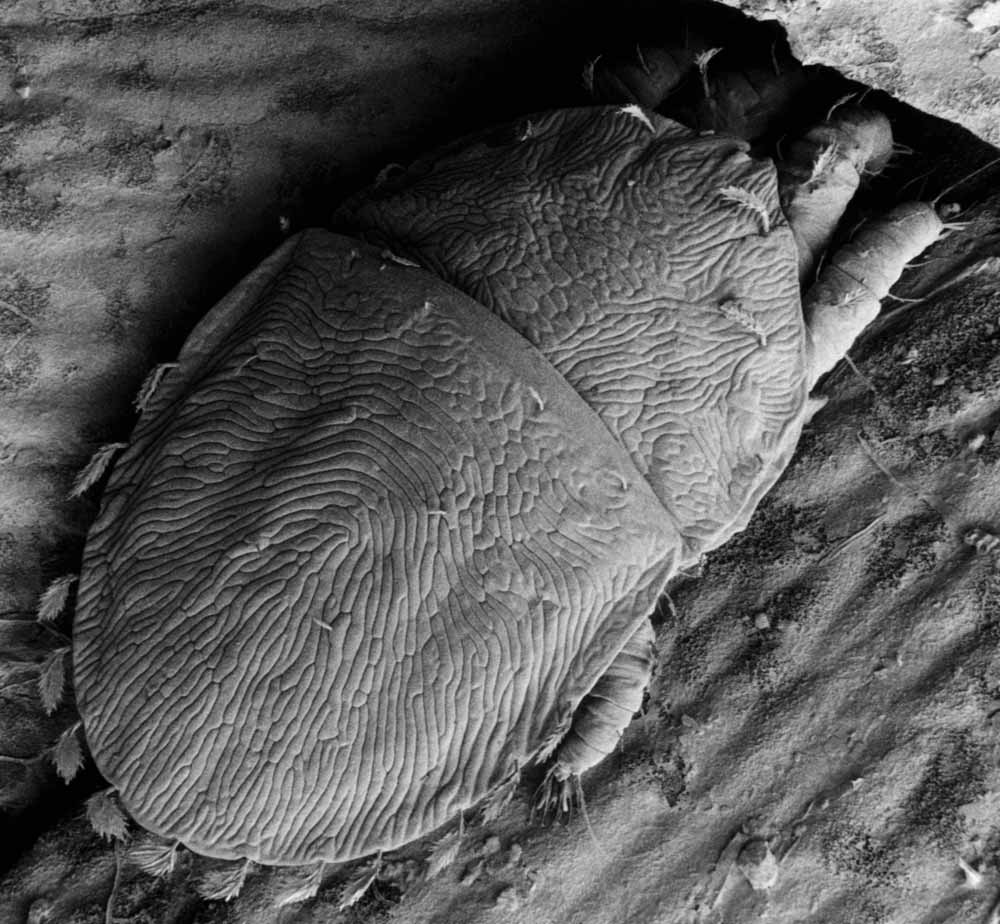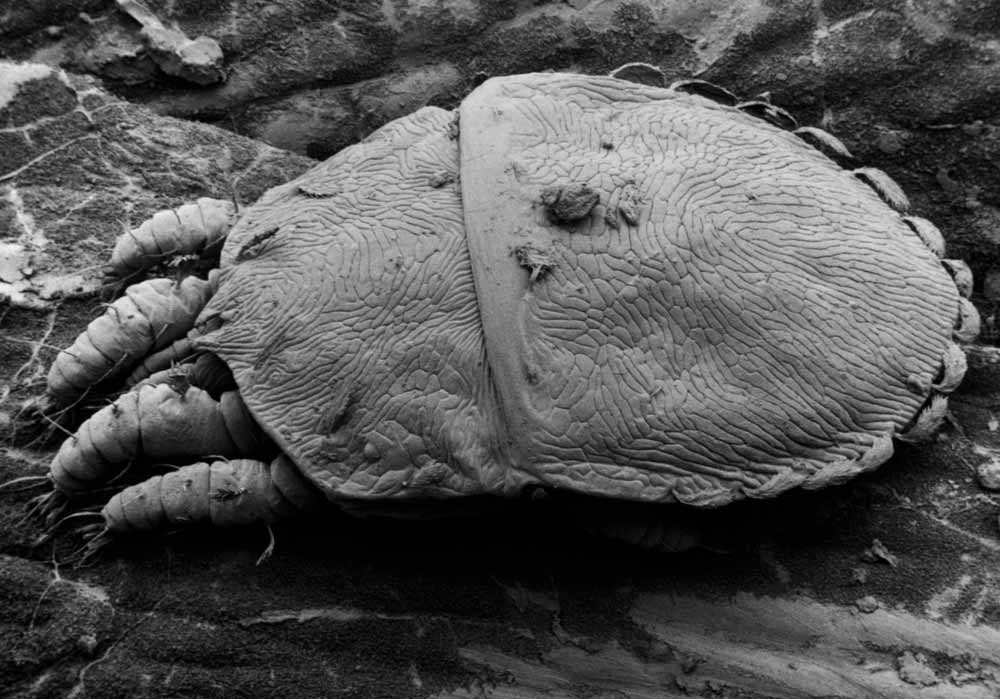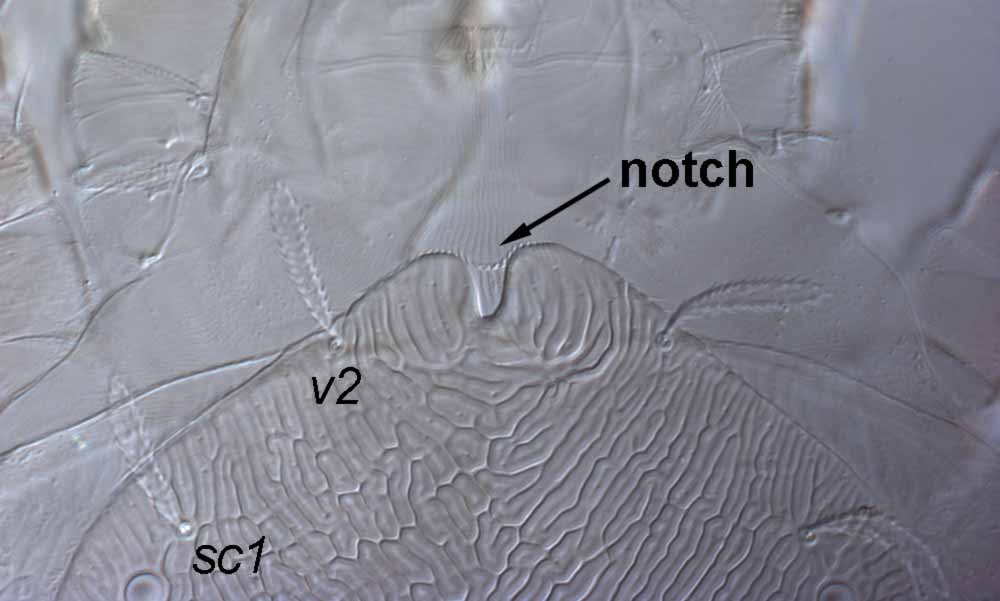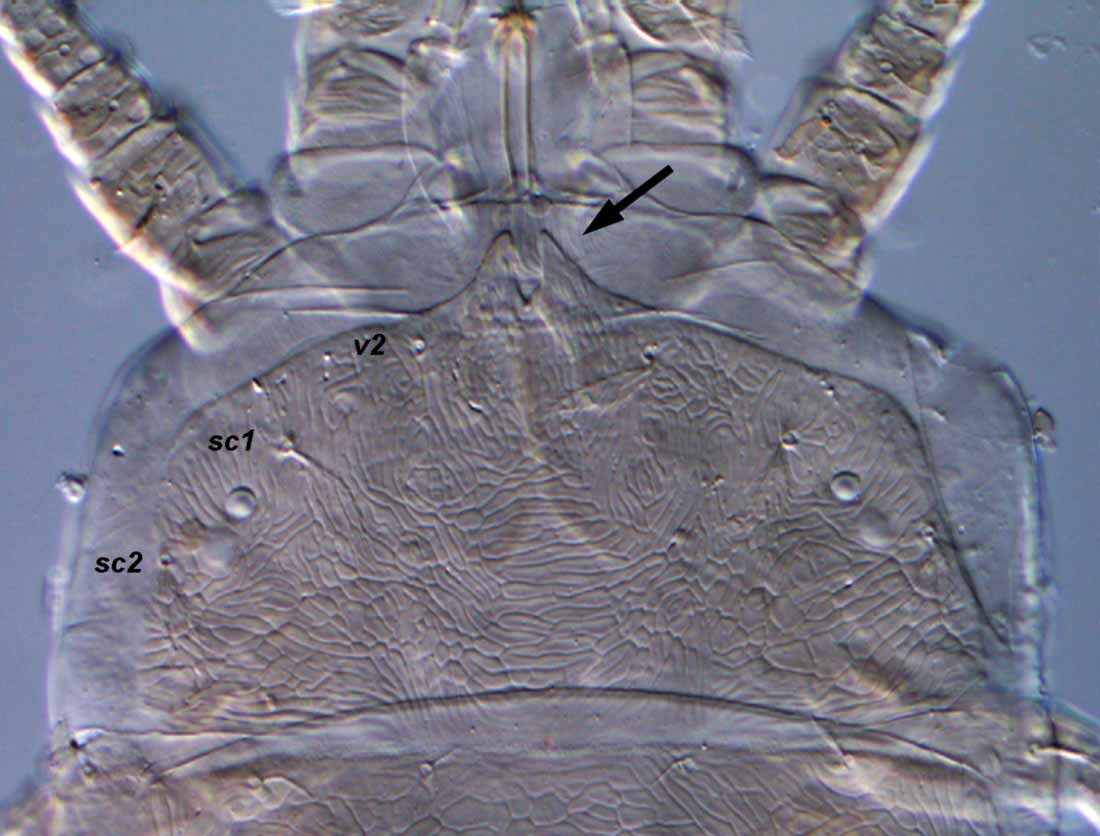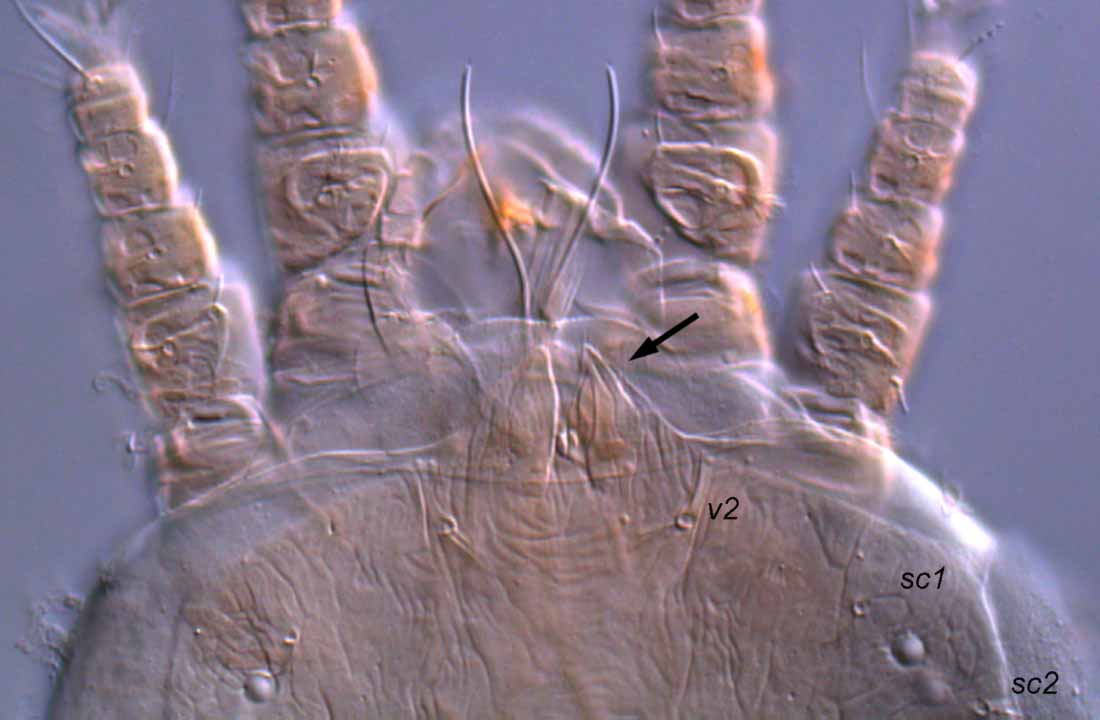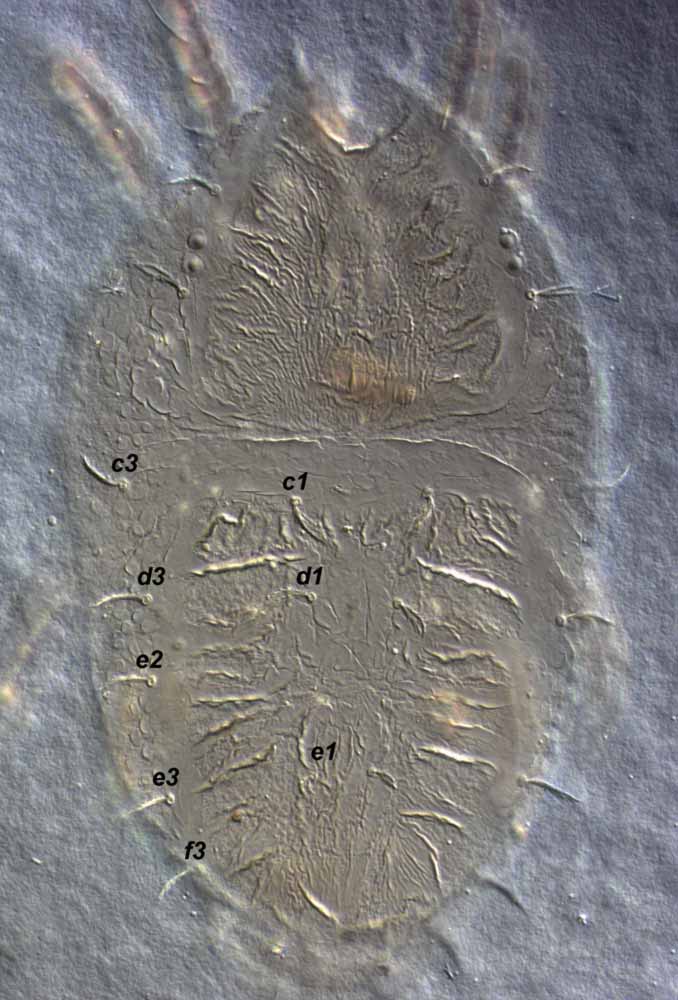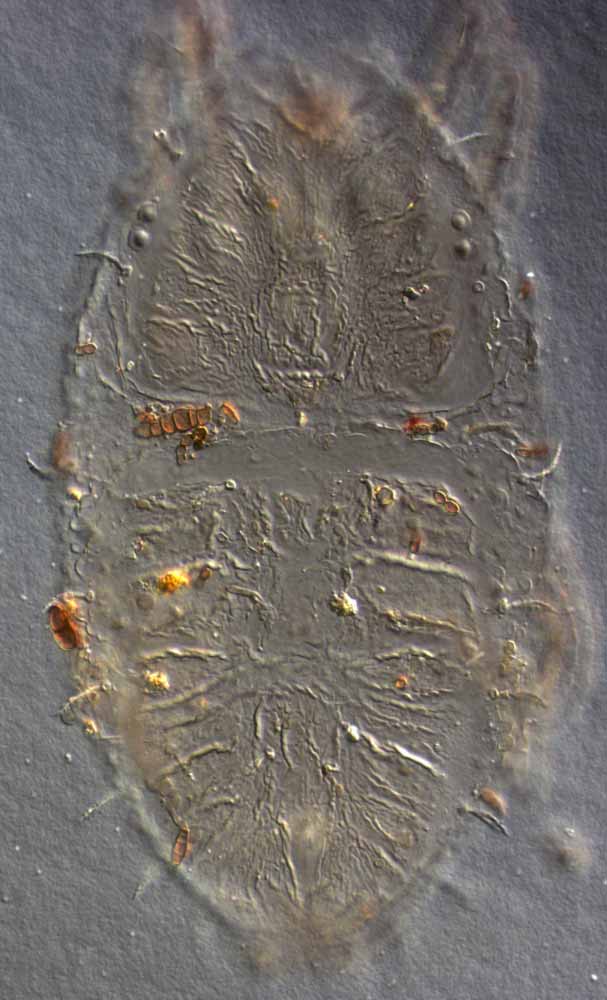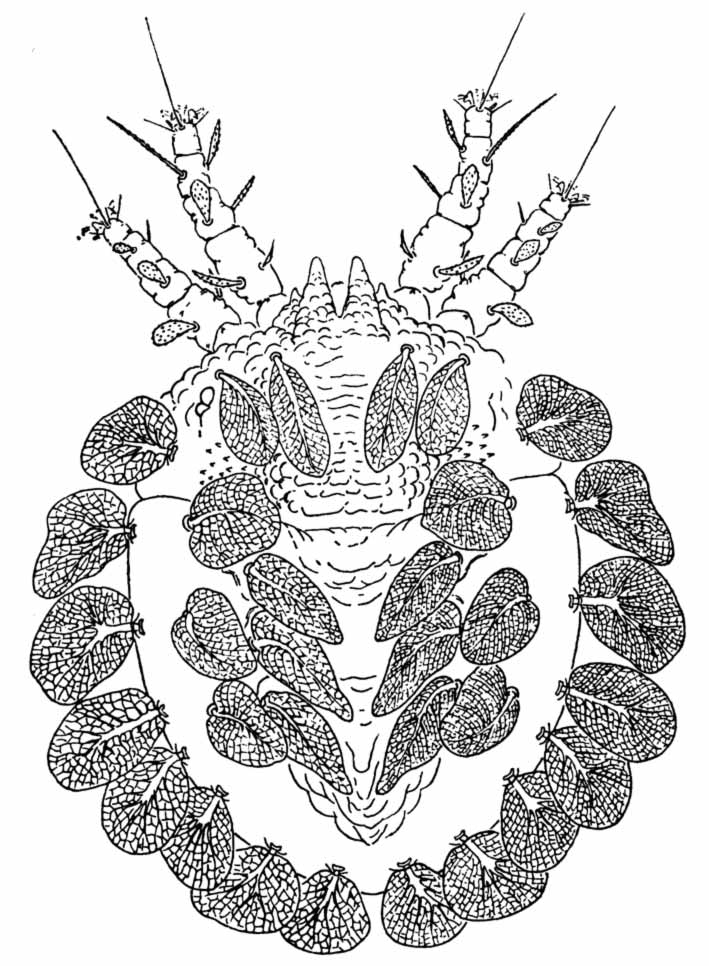Gallery
Fig. 2. Meyeraepalpus delfinadae female anterior margin of prodorsum, indicating triangular lobes and concavity.
Fig. 3. Meyeraepalpus delfinadae female, posterior venter, indicating genital region and 3 pairs of ps setae.
Fig. 4. Meyeraepalpus delfinadae female leg III, indicating femur (fe) with dorsal seta d absent.
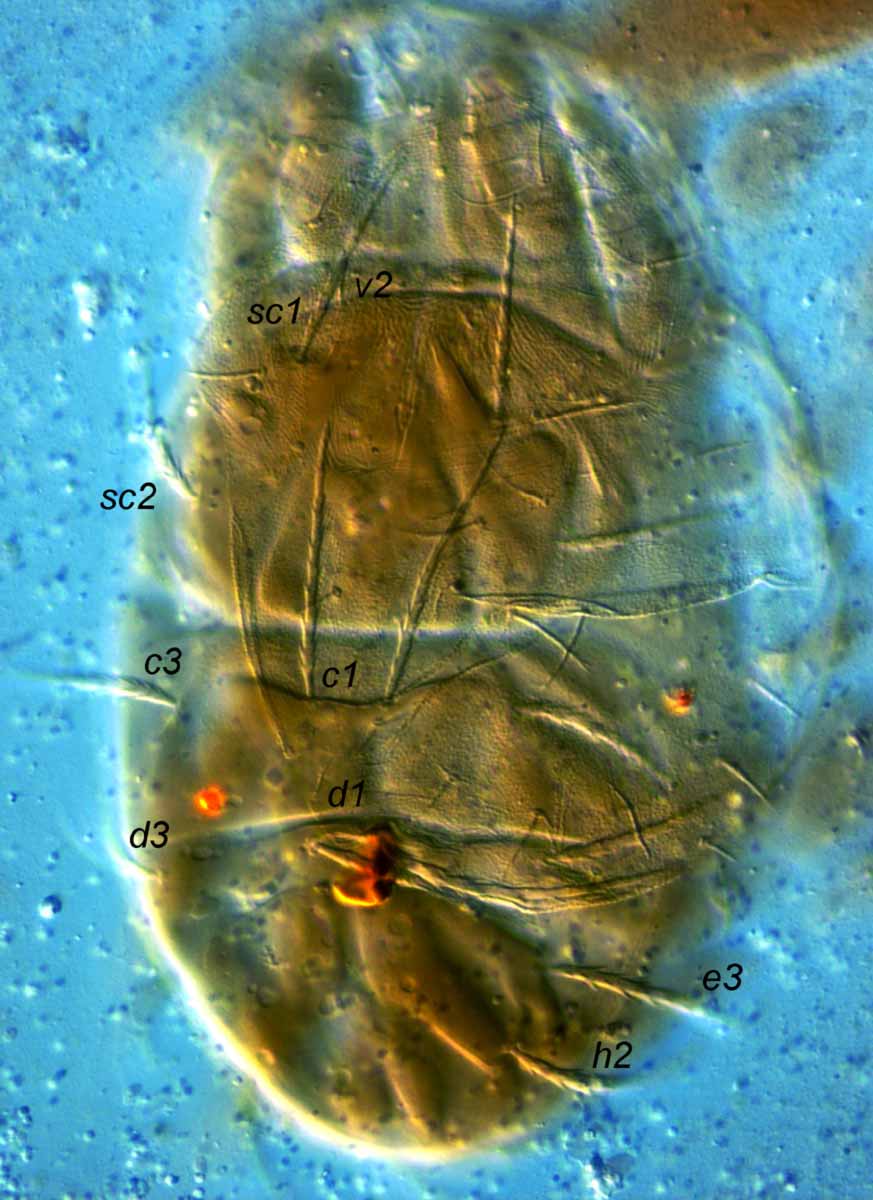 Fig. 2. Obduloides rajamohani female dorsum (moulting - the deutonymphal skin can be seen on the right side).
Fig. 2. Obduloides rajamohani female dorsum (moulting - the deutonymphal skin can be seen on the right side).
Fig. 2. Obduloides rajamohani female dorsum (moulting - the deutonymphal skin can be seen on the right side).
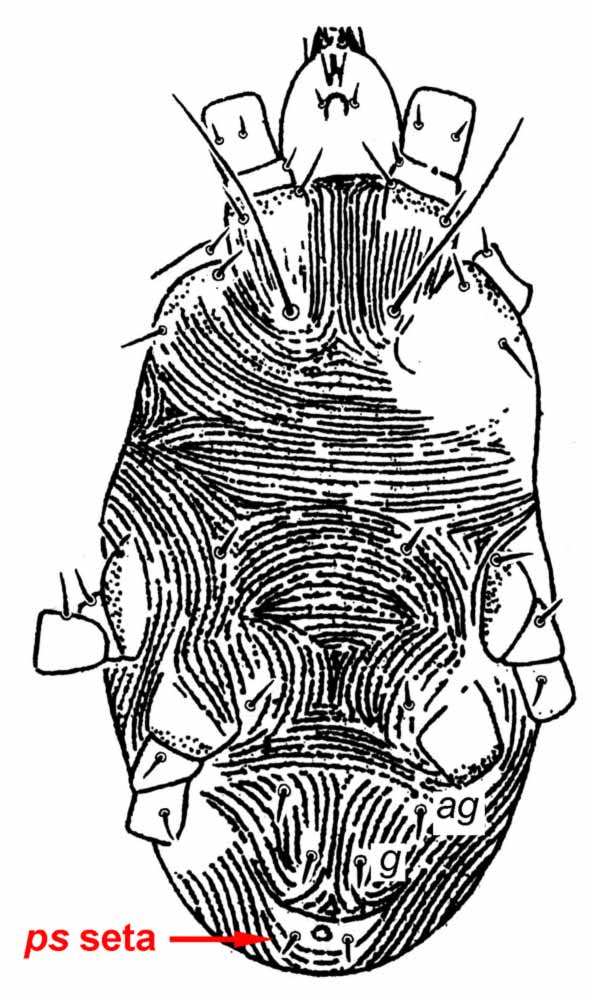 Fig. 3. Obduloides rajamohani female venter, indicating one pair ps setae (after Baker amp; Tuttle 1975).
Fig. 3. Obduloides rajamohani female venter, indicating one pair ps setae (after Baker amp; Tuttle 1975).
Fig. 3. Obduloides rajamohani female venter, indicating one pair ps setae (after Baker & Tuttle 1975).
Fig. 3. Palpipalpus hesperius sp. nov. Beard & Seeman, adult legs I (F= female leg I; M = leg I, note swollen solenidion).
Fig. 1. Pentamerismus abnormis adult female, dorsum and venter (paratype), with f2 present.
Fig. 6. Pentamerismus wardo sp. nov. Seeman & Beard, female anterior dorsum, indicating notch.
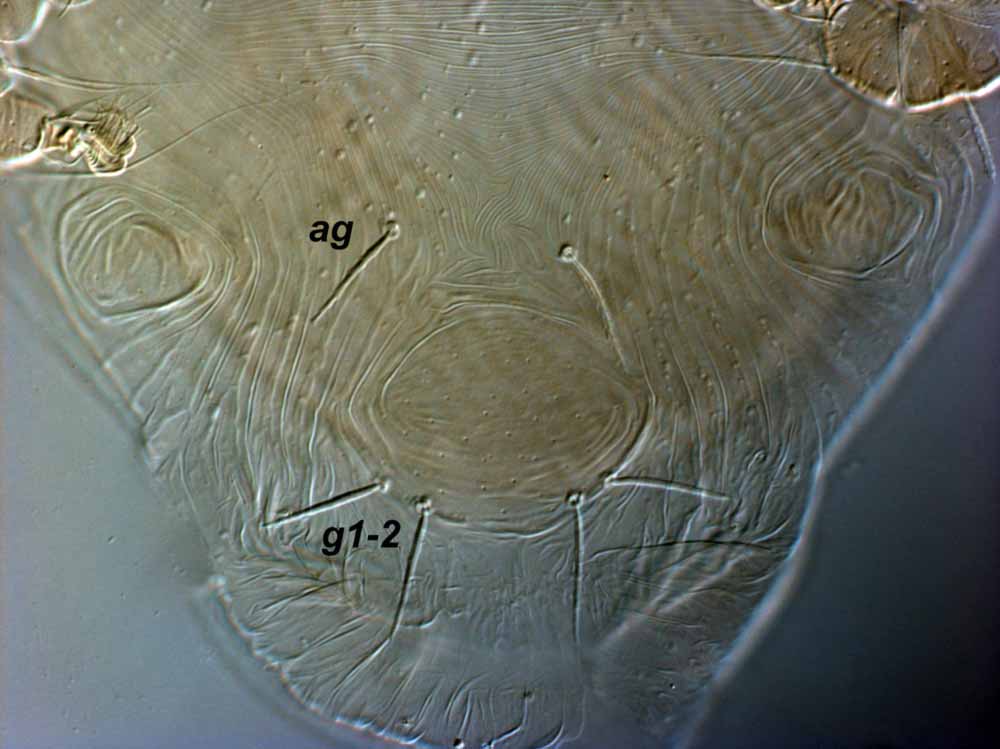 Fig. 10. Pentamerismus wardo sp. nov. Seeman amp; Beard, female venter, with detail of genital region ( ps setae obscured by extruded oviduct).
Fig. 10. Pentamerismus wardo sp. nov. Seeman amp; Beard, female venter, with detail of genital region ( ps setae obscured by extruded oviduct).
Fig. 10. Pentamerismus wardo sp. nov. Seeman & Beard, female venter, with detail of genital region (ps setae obscured by extruded oviduct).
Fig. 2. Philippipalpus agohoi female dorsum, posterior setae h1-2 not in focus (type specimen).
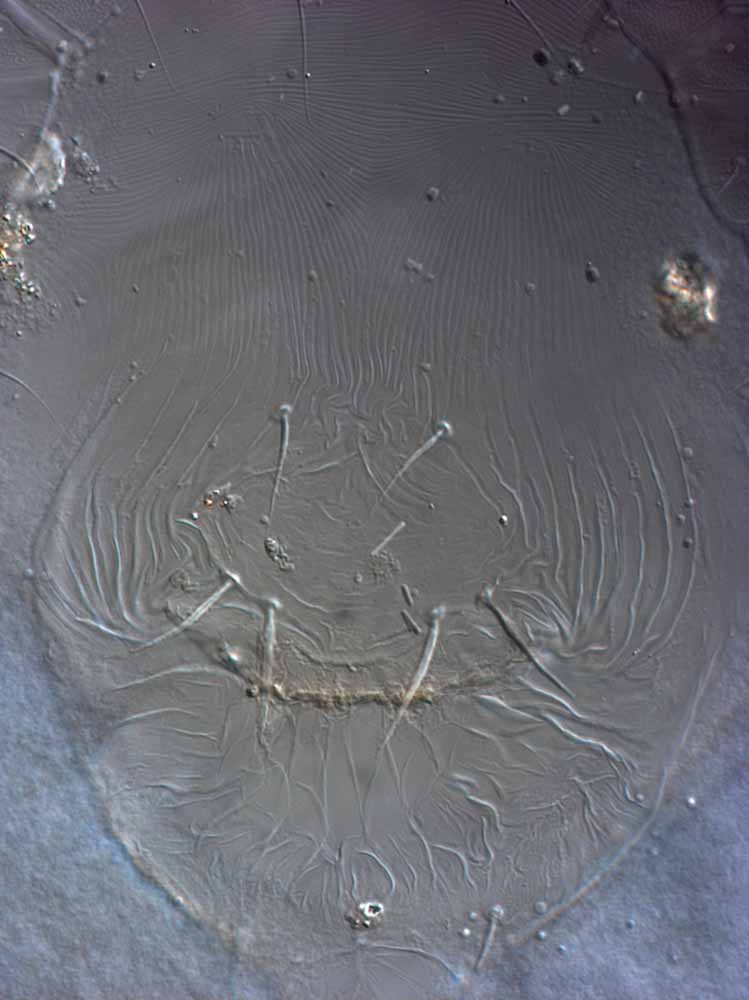 Fig. 5. Philippipalpus agohoi female venter, with detail of genital region ( ps3 visible; oviduct extruded, obscuring ps1-2 ) (type specimen).
Fig. 5. Philippipalpus agohoi female venter, with detail of genital region ( ps3 visible; oviduct extruded, obscuring ps1-2 ) (type specimen).
Fig. 5. Philippipalpus agohoi female venter, with detail of genital region (ps3 visible; oviduct extruded, obscuring ps1-2) (type specimen).
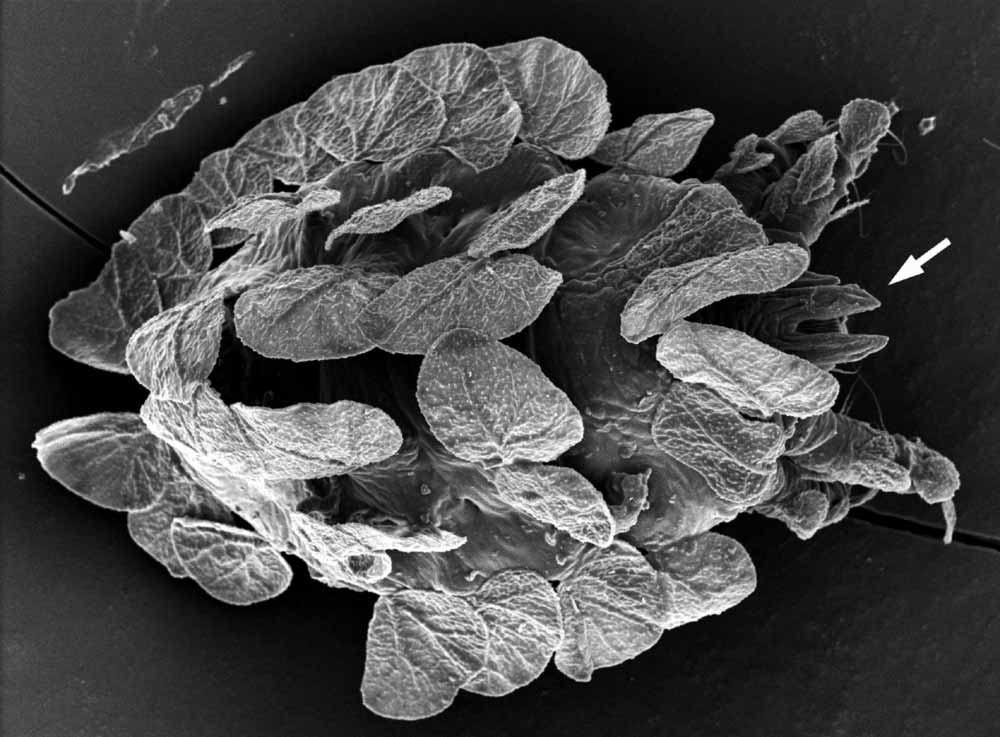 Fig. 2. Phyllotetranychus aegyptium adult female dorsum, arrow indicates anterior forked projection on prodorsum (image: Gary Bauchan, USDA-ARS).
Fig. 2. Phyllotetranychus aegyptium adult female dorsum, arrow indicates anterior forked projection on prodorsum (image: Gary Bauchan, USDA-ARS).
Fig. 2. Phyllotetranychus aegyptium adult female dorsum, arrow indicates anterior forked projection on prodorsum (image: Gary Bauchan, USDA-ARS).
Fig. 3. Phyllotetranychus aegyptium adult female dorsal setae (image: Gary Bauchan, USDA-ARS).

